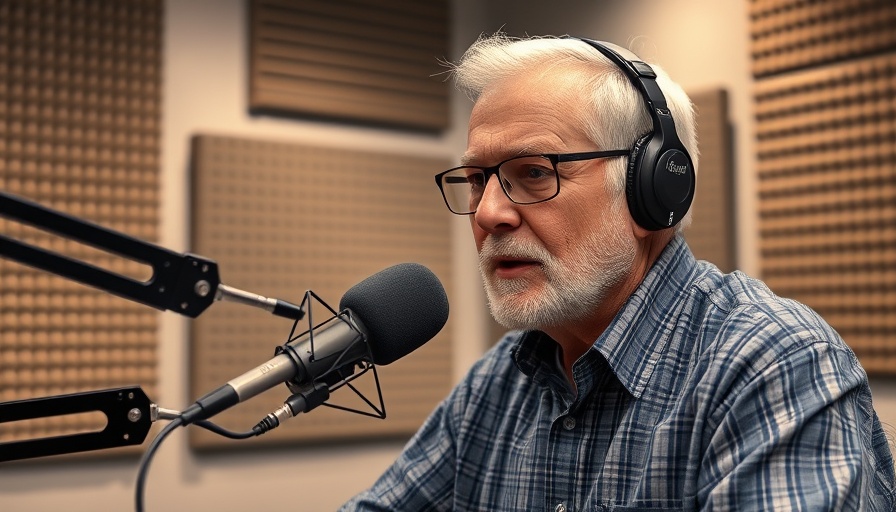
Unlocking Long-term Benefits: The Power of Dual Testing in Crohn's Disease
Crohn's disease (CD), a type of inflammatory bowel disease, poses significant challenges for patients seeking effective management solutions. Recently, a promising study has emerged highlighting the benefits of a dual testing strategy that utilizes both fecal calprotectin (FC) and intestinal ultrasonography (IUS) to assess transmural healing. This approach not only aims to reduce bowel damage progression but also enhances overall long-term outcomes for patients.
The Methodology Behind the Findings
Conducted over several months, researchers from Clermont-Ferrand, France, tracked the health of 112 patients with CD, all over the age of 18. Through a systematic protocol, each participant underwent an IUS along with stool collection for FC testing. The categorization of patients into four distinct groups based on their test results laid the groundwork for understanding the interplay between healing and future risks associated with Crohn's disease.
Defining Healing and Its Implications
The study distinguished four states of healing:
Transmural Healing: Normal FC levels (< 100 μg/g) and normal IUS.
IUS Healing: Elevated FC levels with normal IUS.
Biochemical Remission: Normal FC levels but abnormal IUS.
No Healing: Abnormal levels on both tests.
Notably, approximately 44.6% of patients achieved complete transmural healing. This crucial finding correlates significantly with a reduced risk of bowel damage progression, reiterating the importance of comprehensive monitoring in patient care.
Patient Perspectives: Acceptability of Monitoring Tools
An inspiring aspect of the study was its focus on patient acceptability. Researchers discovered that IUS garnered higher satisfaction ratings compared to FC testing, suggesting that medical professionals should consider patient preferences when recommending treatment plans. Given the psychological toll chronic diseases exert, ensuring patient comfort with monitoring modalities is essential for adherence to treatment.
Longitudinal Impacts: What Transmural Healing Means for Patients
Patients achieving transmural healing had notably lower risks for drug discontinuation related to relapses, compared to those in other categories. The data indicates a hazard ratio of 0.09 for those who experienced complete healing—a compelling statistic that underscores the efficacy of this dual testing approach. Patients are naturally inclined to seek long-term stability in their health, and achieving such remission represents not just a medical victory, but a profound personal triumph.
Reflections on Study Limitations
While this research provides illuminating insights, it is imperative to acknowledge its limitations. The single-center design means results may not be generalizable across diverse healthcare settings. Additionally, the short follow-up duration and reliance on one sonographer call for further research to corroborate findings. These elements highlight the dynamic landscape of medical research, where excellence continuously evolves with greater inclusivity and methodological rigor.
Looking Ahead: Future Predictions in CD Management
The findings from this study stimulate optimism about future trends in the management of Crohn's disease. As dual testing strategies gain traction, healthcare providers may find they are able to create more tailored and effective treatment plans, potentially leading to improvements in quality of life for millions. By prioritizing patient-centered care and embracing innovations like transmural evaluation, the future looks bright for those navigating the complexities of Crohn’s disease.
Taking Action: Embrace Health and Wellness
As we reflect on the implications of these findings, there lies an undeniable call to action. Patients and healthcare professionals alike must champion dual testing approaches in Crohn’s disease management. Let's advocate for comprehensive testing strategies that usher in a new era of patient care, leveraging this dual testing strategy to aid ongoing research and unveil future breakthroughs.
Whether you are a patient, caregiver, or practitioner, knowledge and proactive engagement are your allies in the journey toward better health. Embrace the power of informed decision-making and consider discussing dual testing with your healthcare provider as a means to enhance management outcomes.
 Add Row
Add Row  Add
Add 




 Add Row
Add Row  Add
Add 

Write A Comment